The vinification of our wines

Pressing is done by two pneumatic presses.
A progressively inflated air chamber gently crushes the grapes against the wall of the perforated cylinder of the press.
Three to four hours are needed to press 3 to 4 tons of grapes. The resulting grape juice is cloudy and contains pulp and skin particles.
The settling of the juice, which consists of eliminating them, is carried out statically. The deposits called “bourbes” settle at the bottom of the settling tank. Theses “bourbes”, which contains only about 10% of solid elements, are filtered to recover the rest of the clear grape juice.
The grape juice is put into a tank and starts to ferment about 48 hours later.
Our vinification is done in the traditional way.
The harvest begins approximately 100 days after the blooming date.
Each year, an official date is set for the start of the harvesting season.
Except for the Crémant and Sylvaner, most of our harvest is destalked.
After maceration, the Pinot Noir is manually removed of the vats.
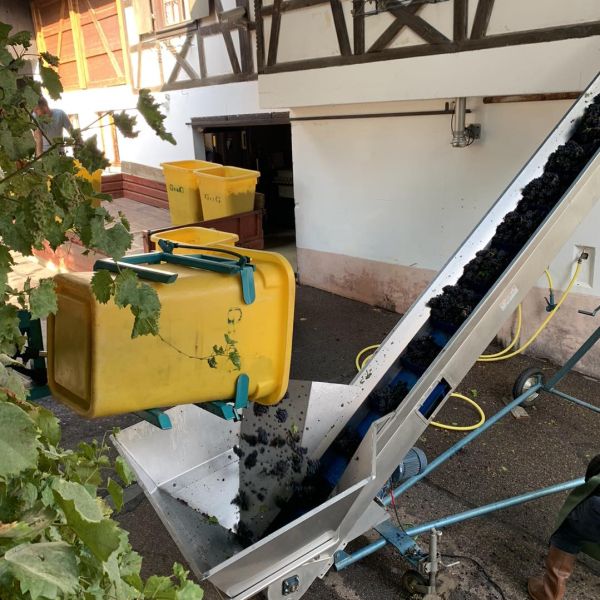

All fermentations are done at controlled temperatures in several types of vats: oak barrels, glass, enamel or stainless steel tanks.
Fermentation transforms the sugars in the grapes into alcohol. It takes an average of 8 days.
Racking is made approximately one month after the end of fermentation. This operation consists of separating the clear wine from the lees deposits that form at the bottom of the tank.
Finally, filtration stabilises the wines before bottling and makes them clearer and more brilliant.
The bottling process lasts about twelve days. It’s done in two or three stages from April, and finishes at the latest at the beginning of September, to allow space for the new harvest.
History of Crémant d’Alsace
Sparkling wines have been produced in Alsace according to the traditional method since the end of the 19th century. The Crémant d’Alsace Appellation d’Origine Contrôlée was obtained in 1976.
Strict production rules guarantee its quality and have enabled Crémant d’Alsace to become a renowned product in France and Europe. Today, Crémant d’Alsace represents one in ten bottles sold in Alsace.
Our winery produced its first Crémant in 1982, from a blend of Pinot Blanc Auxerrois, Riesling and Pinot Gris.
Since then, our Crémants have won several awards:
- In competitions: 17 Gold medals, 10 Silver medals and 3 Bronze medals (Colmar, Paris and Concours des Crémants de France).
- In the guides: Petit Futé, Guide Hachette: 3 stars in 1990, 3 stars in 1989, 2 stars twice, and 5 times one star.
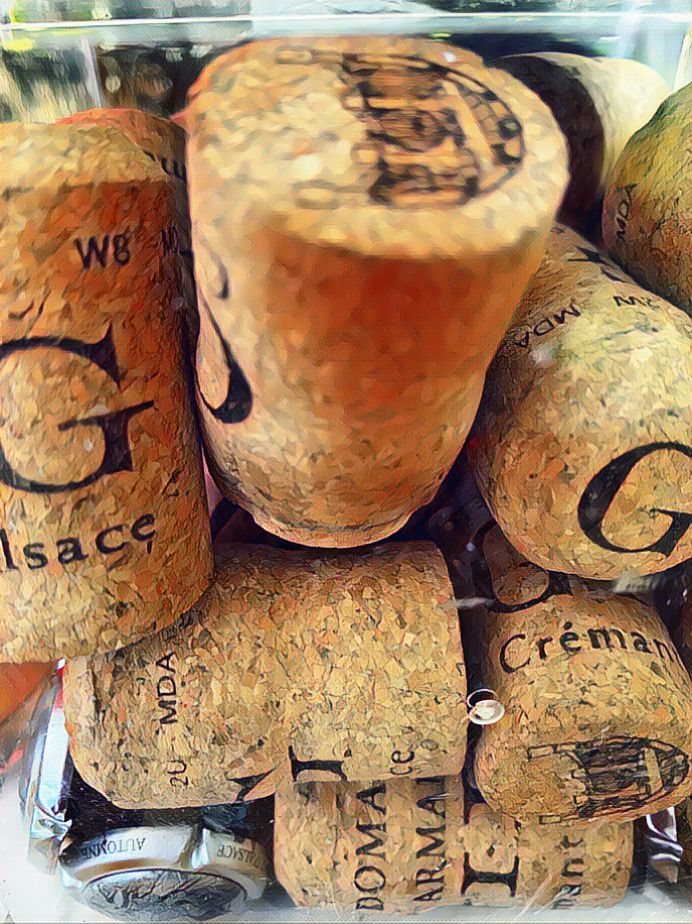
The elaboration of Crémant d’Alsace
Crémants can only be made from certain grape varieties: Pinot Blanc, Auxerrois, Pinot Gris, Pinot Noir, Riesling and Chardonnay.
Our winery produces Crémants from Auxerrois, Riesling, Pinot Noir and Pinot Gris, blended or not depending on the vintage.
The harvest is early, 80 to 90 days after blooming, in order to obtain a harmonious and balanced basic wine.
The grapes, collected from the vineyard in trays, are weighed. To increase the finesse of the product and the quality of the foam, the pressing is limited to 100 litres of juice for 150 kg of grapes.
The grapes are transported to the press by a conveyance line to preserve their integrity.
After static settling, a first fermentation in tank produces the base wine with a grade of about 11 degrees, which is not yet sparkling at this stage.
Bottling takes place between January and March. It takes three days. A service provider installs the bottling machine on the property. This machine can fill up to 5,400 bottles per hour. A tirage liquor, consisting of wine, yeast and sugar, is added to the base wine, which initiates the second fermentation in the bottle.
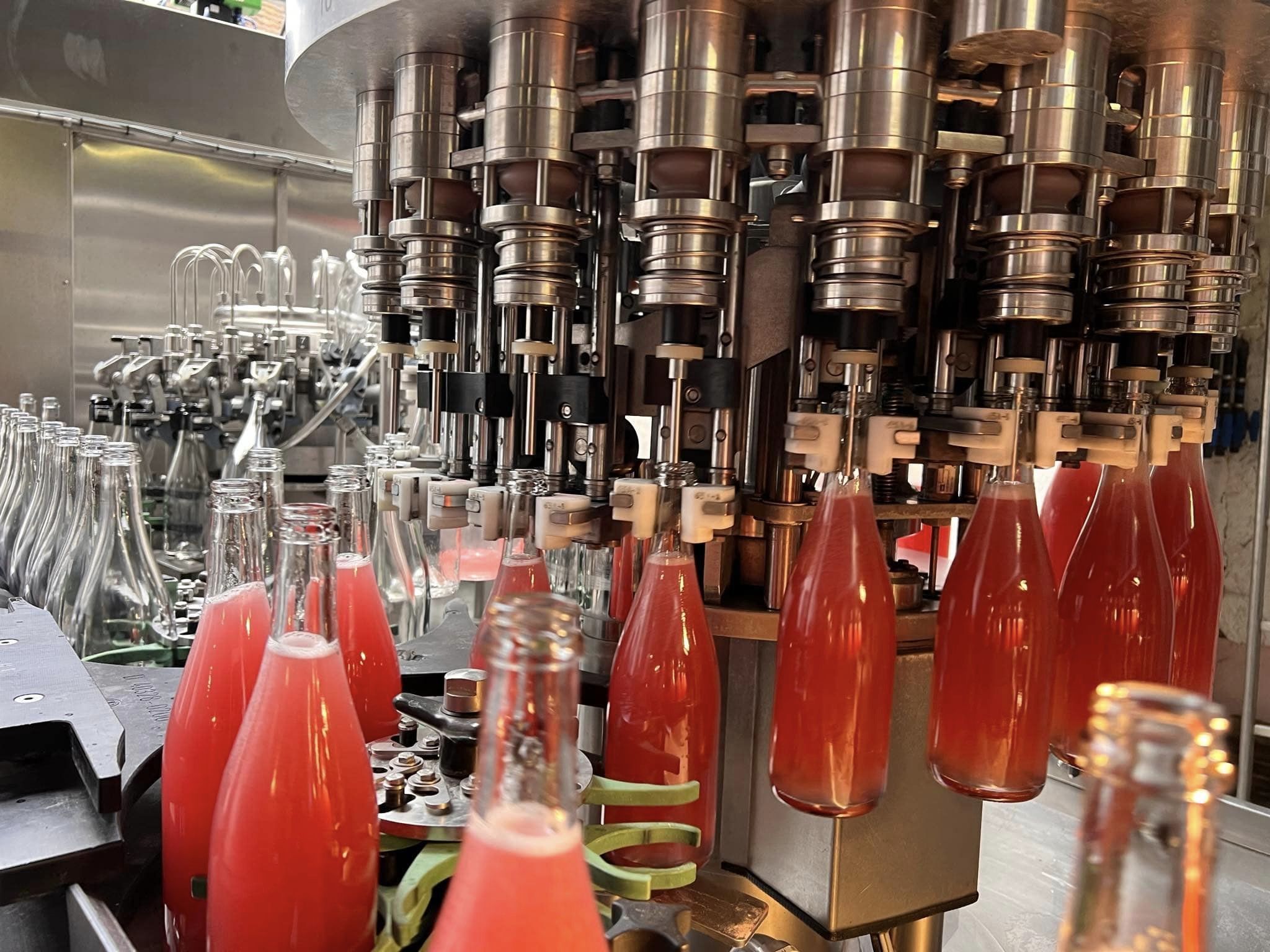
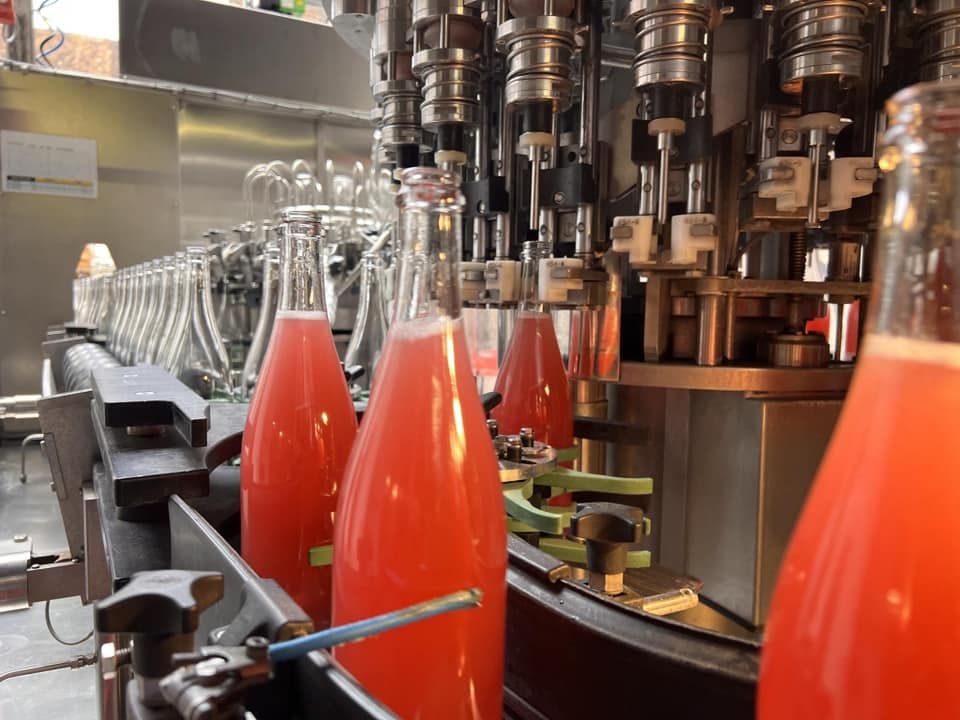
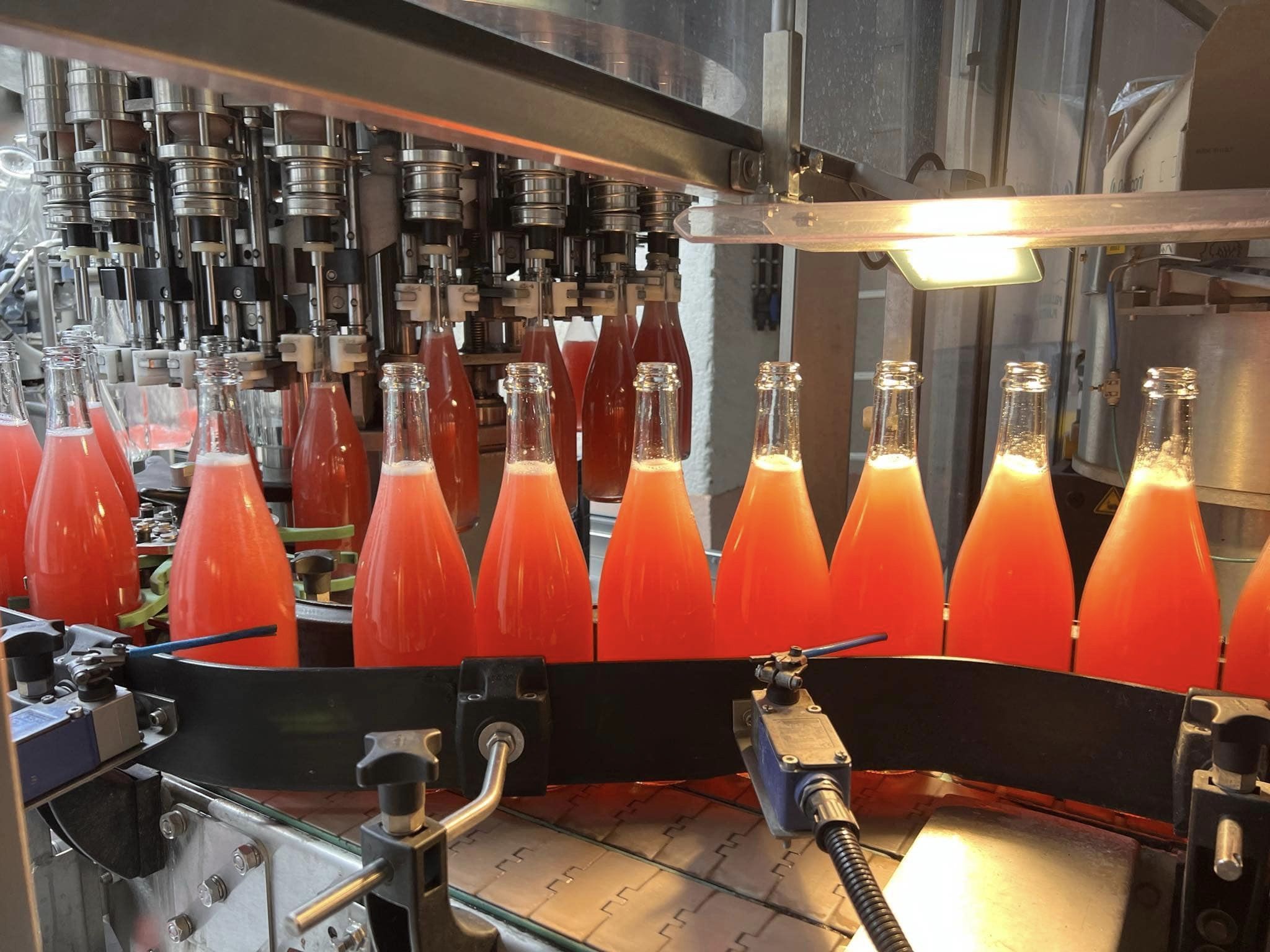
The sparkling process
The carbon dioxide released during fermentation remains trapped in the bottle, which is sealed by a metal cap, and turns the wine sparkling. Under the action of the yeasts, the sugar added by the liqueur de tirage is transformed into alcohol. The Crémant then contains less than one gram of residual sugar and has an alcohol content of 12 to 12.5 degrees. In the absence of sugar, the yeasts die and form a deposit that must be removed.
Fermentation in the bottle takes about two months.
It is carried out in an air-conditioned part of our cellar at 11 degrees, because only a slow and regular fermentation allows us to obtain fine bubbles.
Aging “on slats”
The bottles are then left to age for a minimum of 12 months “on slats”.
Riddling
The riddling machine allows the deposit to be gradually lowered into the neck of the bottle.
A computer is used to program the simultaneous rotation of two pallets of Crémant.
Disgorging
This operation is done four or five times a year depending on the needs.
As with bottling, the service provider installs the machines required for this operation for the day.
The neck of the bottle is quickly cooled to freeze the deposit. The bottle can then be turned over and opened.
The volume released allows the Crémant to be dosed with a liqueur:
- in Brut Nature (without sugar for our product, but the legislation permits up to 2 g of residual sugar per litre)
- or in Brut (dosage of 7 to 8 g of residual sugar per litre for our Crémants – legislation: up to 12 g/litre).
Finally the cork and its muselet are placed on the bottle.
The Crémant is then ready for sale.